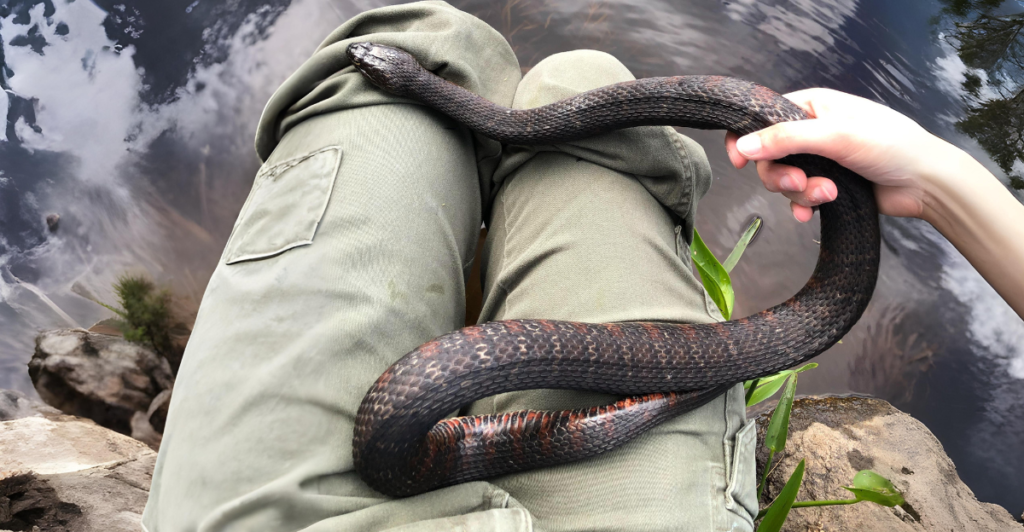
America’s waters are home to many fascinating creatures, including snakes, some of which are harmless and others potentially dangerous. While many water snakes are non-venomous and play important roles in their ecosystems, others, like the infamous cottonmouth, pose serious risks to humans.
These creatures thrive in rivers, lakes, swamps, and coastal areas, often blending seamlessly into their surroundings. Misidentification of venomous and non-venomous species is common, which has led to unnecessary fear and harm.
Today, we will take a look at nine of the most dangerous water snakes found in America, focusing on their unique traits, venom potency, and behavioral quirks. By understanding these species, you can navigate their habitats safely while appreciating their important role in maintaining ecological balance.
1. Cottonmouth

The cottonmouth, also known as the water moccasin, is the only semiaquatic pit viper in the world and one of the most dangerous water snakes in America. It can be found across the southeastern United States and thrives in swamps, marshes, and slow-moving rivers.
Its venom is cytotoxic and is capable of causing severe tissue damage that can lead to amputations if left untreated. Cottonmouths are known for their defensive behavior. When they feel threatened, they coil up and display their signature white mouth as a warning.
Despite their aggressive reputation, they rarely bite unless they are provoked. They play an important ecological role by controlling aquatic rodent populations. Learning to distinguish them from harmless water snakes is essential to avoiding unnecessary panic or harm.
2. Northern Water Snake
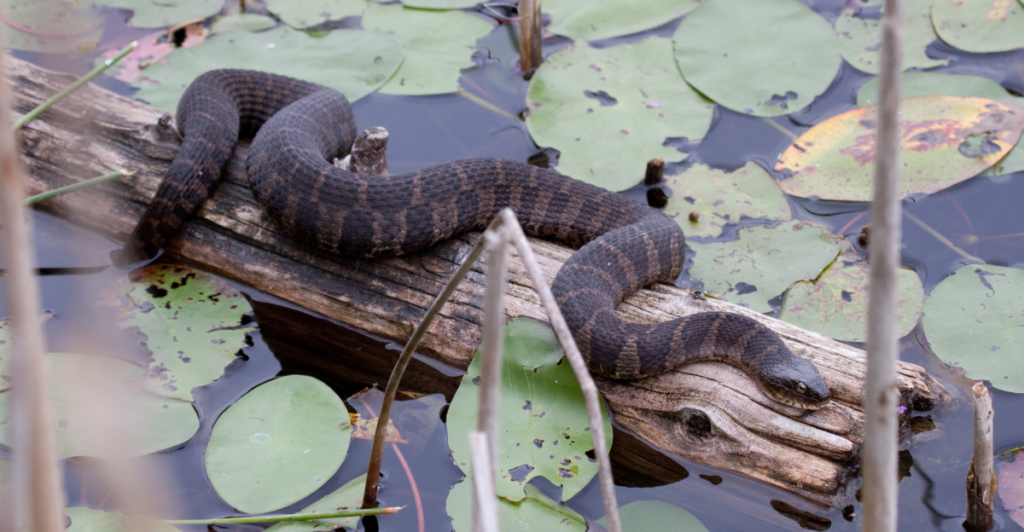
The northern water snake is a non-venomous species that is often mistaken for venomous snakes like the cottonmouth because of its similar coloration and patterns. Found throughout the eastern United States in lakes, rivers, and ponds, this snake is highly defensive when cornered.
Its bite is non-venomous but painful and contains anticoagulants that can cause excessive bleeding. While it poses no real danger to humans, its aggressive behavior often leads to misidentification and unnecessary killings.
Northern water snakes are crucial predators of fish and amphibians in their ecosystems. Understanding their role and learning to identify them correctly can help reduce fear and encourage coexistence with this misunderstood species.
3. Brown Water Snake

The brown water snake is also non-venomous but has earned a reputation for startling people by falling from tree branches into boats or the water below. It is native to the southeastern United States and inhabits rivers and swamps where it hunts fish.
Its large size and resemblance to venomous species like copperheads contribute to widespread fear and misidentification. While its bite is harmless to humans, its defensive nature can lead to painful encounters if it is provoked.
Brown water snakes also play an important role in maintaining healthy fish populations in their habitats. By recognizing their distinct patterns and behaviors, we can dispel myths about these fascinating and misunderstood species.
4. Banded Water Snake
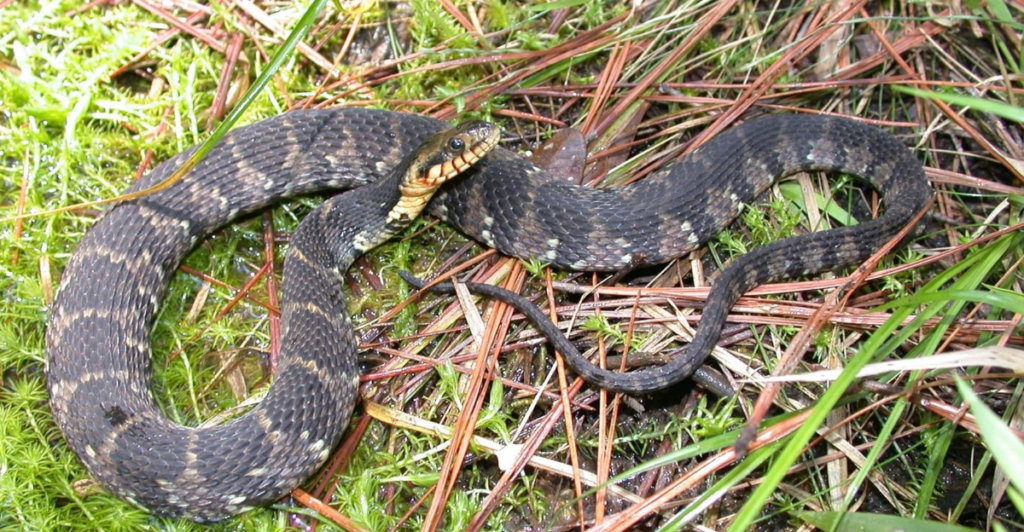
The banded water snake is a non-venomous snake that mimics the appearance of the cottonmouths as a defense mechanism against predators. It can primarily be found in Florida and other southeastern states. It lives in freshwater environments like swamps and ponds.
Its mimicry often leads to unnecessary fear or harm from humans who mistake it for a venomous snake. Unlike cottonmouths, banded water snakes have round pupils and narrower heads.
These snakes are vital for controlling rodent populations near waterways but face threats because of habitat destruction and human misunderstanding.
5. Yellow-Bellied Sea Snake

The yellow-bellied sea snake is one of the most venomous aquatic snakes globally but rarely encounters humans in American waters. It occasionally drifts into coastal areas like California because of ocean currents.
The yellow-bellied sea snake delivers neurotoxic venom that can cause paralysis or death if left untreated. Thankfully, bites are very rare because of this snake’s reclusive nature.
Its striking yellow underside is a warning signal for predators to stay away from this snake, but it also helps it to camouflage in open waters. Despite its rarity near American shores, beachgoers should remain cautious when spotting unusual marine life during warm-water events like El Niño.
6. Prairie Rattlesnake

While they are not strictly aquatic, prairie rattlesnakes often inhabit areas near rivers or streams in western states like Colorado and Wyoming, which makes them occasional threats near water sources.
Their potent venom contains hemotoxins that cause severe pain, swelling, and tissue damage if a bite is left untreated. In extreme cases, it can lead to permanent muscle damage or even amputation.
Prairie rattlesnakes are less aggressive than other rattlesnake species but will defend themselves if threatened or stepped on near waterways where they hunt small mammals or amphibians.
7. Mojave Rattlesnake
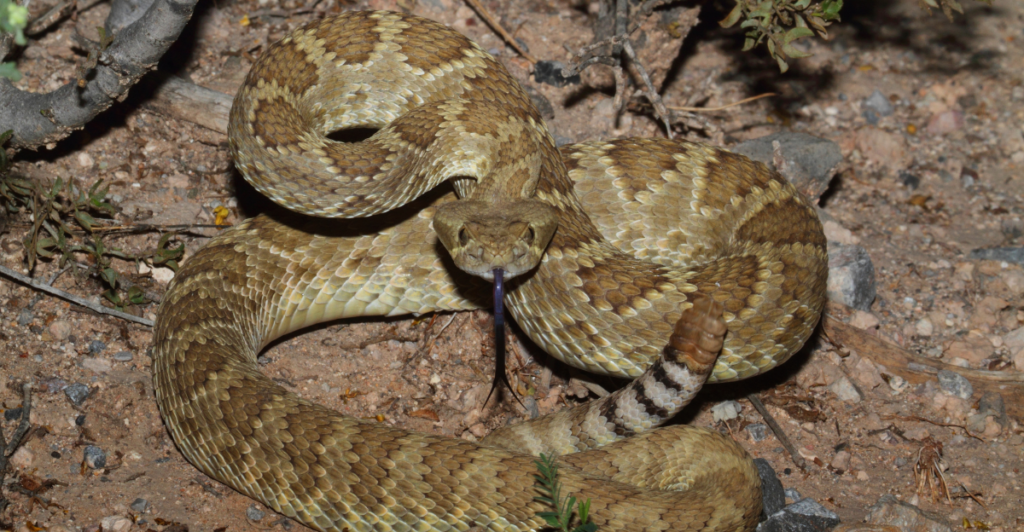
The Mojave rattlesnake can be found in southwestern states near desert waterways or oases. This snake is one of America’s most dangerous rattlesnakes due to its potent neurotoxic venom that causes respiratory failure if untreated.
Its venom is particularly dangerous because it often produces mild or delayed initial symptoms, leading victims to underestimate the severity of the bite until critical complications arise.
Prompt medical attention is essential, as respiratory paralysis can occur hours after envenomation. The Mojave rattlesnake’s greenish hue and relatively quiet rattle also make it harder to detect, increasing the risk of accidental encounters in its natural habitat.
8. Timber Rattlesnake
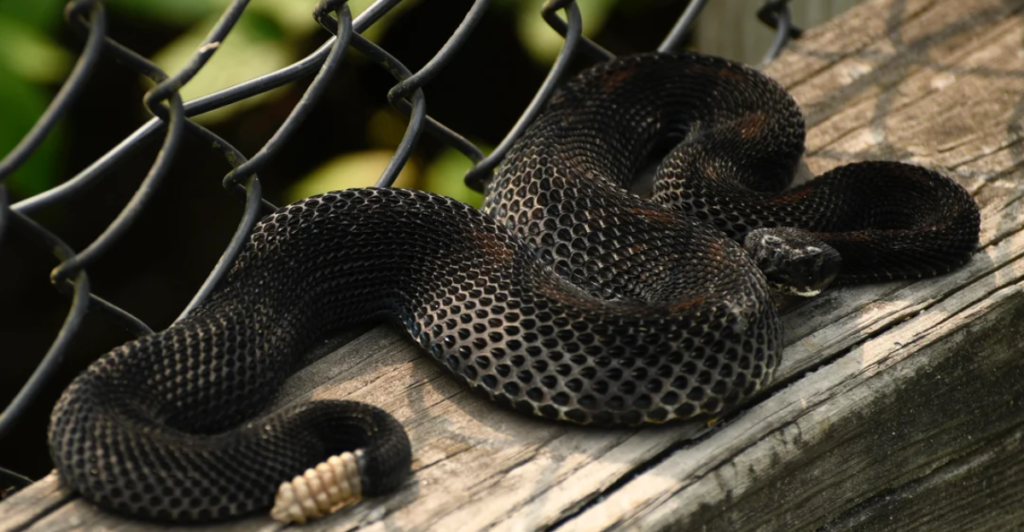
The timber rattlesnake lives in wooded areas near rivers across eastern states like Pennsylvania and Virginia, but they do not live in the water. These snakes are rarely seen due to their camouflaged patterns and shy nature.
Known for their mild temperament compared to other rattlesnakes, they only strike when provoked but deliver powerful hemotoxic venom capable of causing extensive tissue damage.
The timber rattlesnake has a thick, heavy body with a pattern of dark, V-shaped bands over its yellow, brown, or gray body. It has a broad, triangular head, vertical pupils, and a distinctive rattle at the end of its tail.
9. Eastern Diamondback Rattlesnake
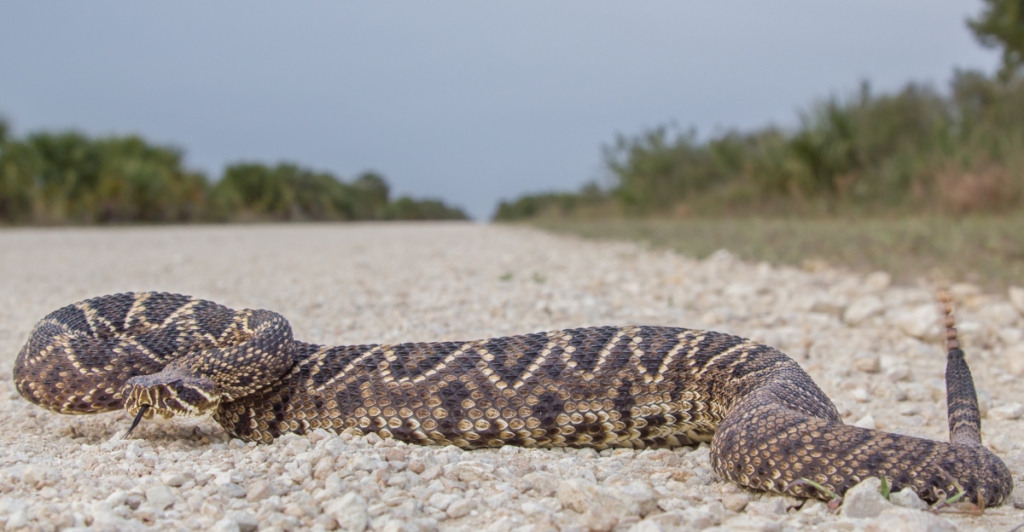
The eastern diamondback rattlesnake is the largest venomous snake in North America and occasionally ventures near freshwater sources like marshes, wetlands, and forested riverbanks in the southeastern U.S. It does not live in water.
This species is known for its bold diamond-shaped markings and powerful rattle. It delivers large doses of hemotoxic venom that can lead to rapid swelling, tissue destruction, and even death if left untreated.
Though typically shy and preferring to avoid confrontation, its size and strength make it especially dangerous if surprised near water. Due to habitat loss and human encroachment, encounters are becoming more common in rural and suburban areas.
Explore more of our trending stories and hit Follow to keep them coming to your feed!

Don’t miss out on more stories like this! Hit the Follow button at the top of this article to stay updated with the latest news. Share your thoughts in the comments—we’d love to hear from you!







